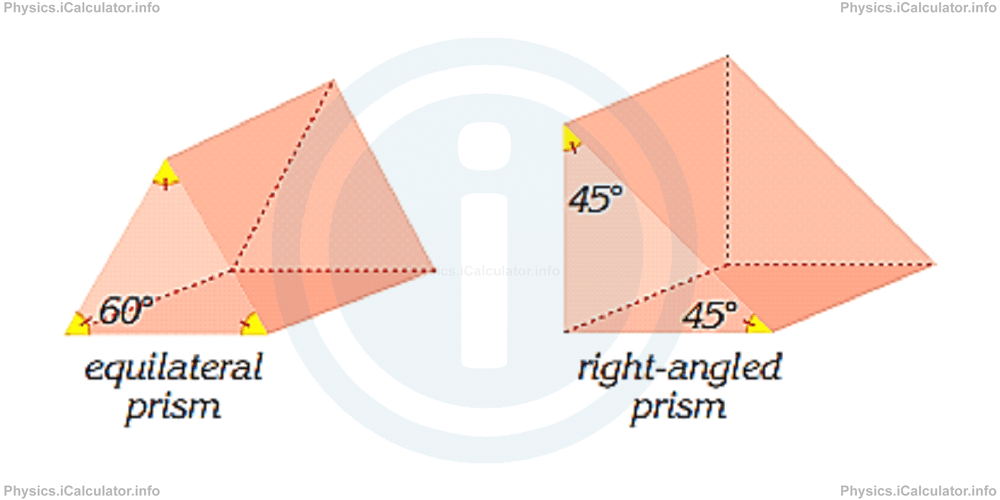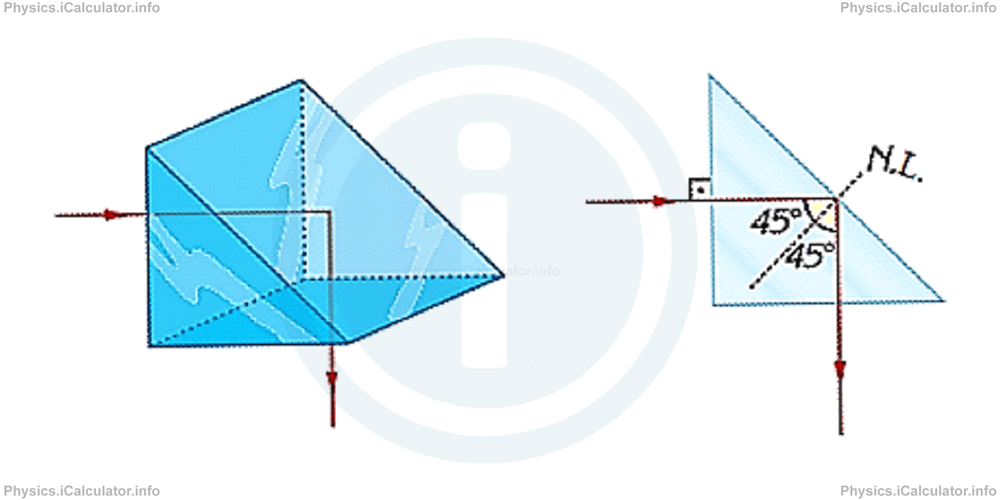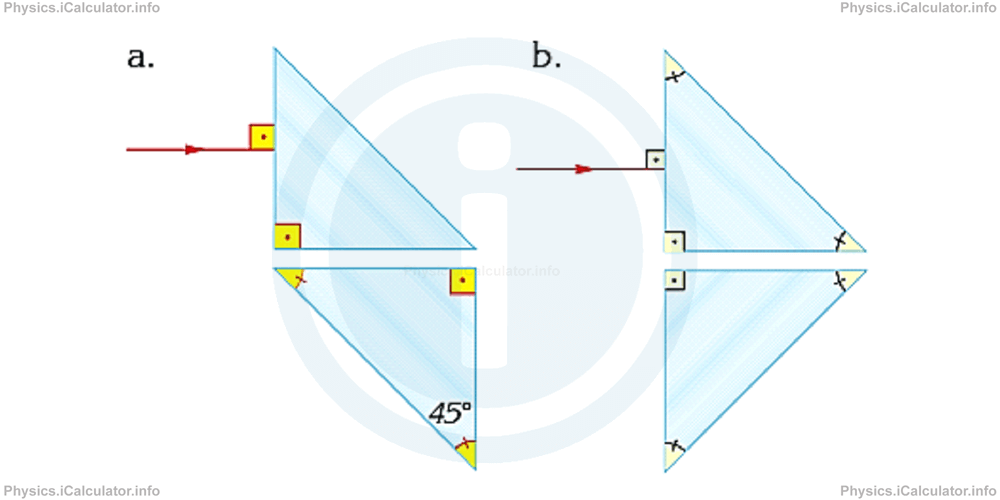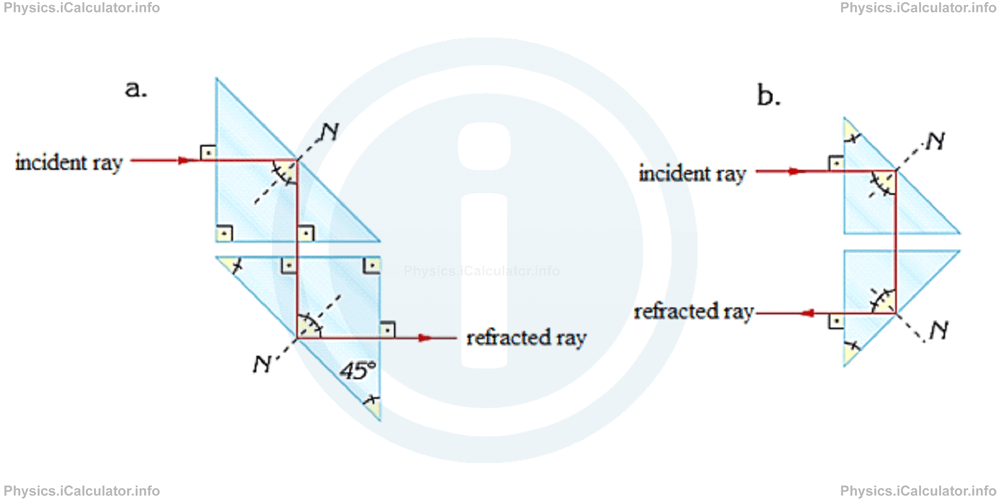Menu
Physics Lesson 12.5.4 - Totally Reflecting Prisms
Please provide a rating, it takes seconds and helps us to keep this resource free for all to use
Welcome to our Physics lesson on Totally Reflecting Prisms, this is the fourth lesson of our suite of physics lessons covering the topic of Dispersion of Light, you can find links to the other lessons within this tutorial and access additional physics learning resources below this lesson.
Totally Reflecting Prisms
Glass prisms can be used to change the direction of light. Right-angled prisms (with angles 45°-45°-90°) and equilateral prisms (with all angles equal to 60° for each corner) are the most common types of prisms and are shown in the figure below.

The light ray entering the glass prism cannot pass into air from the long side of the prism as seen in figure below. This is because the light ray strikes this surface at an angle of incidence of 45° which is greater than the critical angle for glass (41.8°). Thus, total reflection occurs inside the glass (remember the phenomenon of total internal reflection explained in our Physics tutorial on the Refraction of Light). Thus, at the end of process the direction of light changes by 90°.

Example 2
What is the path of the refracted light rays for the incident rays shown in the figure? Prisms are identical and their adjacent bases are in parallel with each other.

Solution 2
We know that if the angle of incidence for glass is greater than 41.80, the light cannot pass into air, and so, the total internal reflection occurs inside the prism. This phenomenon occurs in both situations shown in the figure. Therefore, the rays follow the paths shown below.

You have reached the end of Physics lesson 12.5.4 Totally Reflecting Prisms. There are 4 lessons in this physics tutorial covering Dispersion of Light, you can access all the lessons from this tutorial below.
More Dispersion of Light Lessons and Learning Resources
Whats next?
Enjoy the "Totally Reflecting Prisms" physics lesson? People who liked the "Dispersion of Light lesson found the following resources useful:
- Prism Feedback. Helps other - Leave a rating for this prism (see below)
- Optics Physics tutorial: Dispersion of Light. Read the Dispersion of Light physics tutorial and build your physics knowledge of Optics
- Optics Revision Notes: Dispersion of Light. Print the notes so you can revise the key points covered in the physics tutorial for Dispersion of Light
- Optics Practice Questions: Dispersion of Light. Test and improve your knowledge of Dispersion of Light with example questins and answers
- Check your calculations for Optics questions with our excellent Optics calculators which contain full equations and calculations clearly displayed line by line. See the Optics Calculators by iCalculator™ below.
- Continuing learning optics - read our next physics tutorial: Polarization of Light
Help others Learning Physics just like you
Please provide a rating, it takes seconds and helps us to keep this resource free for all to use
We hope you found this Physics lesson "Dispersion of Light" useful. If you did it would be great if you could spare the time to rate this physics lesson (simply click on the number of stars that match your assessment of this physics learning aide) and/or share on social media, this helps us identify popular tutorials and calculators and expand our free learning resources to support our users around the world have free access to expand their knowledge of physics and other disciplines.